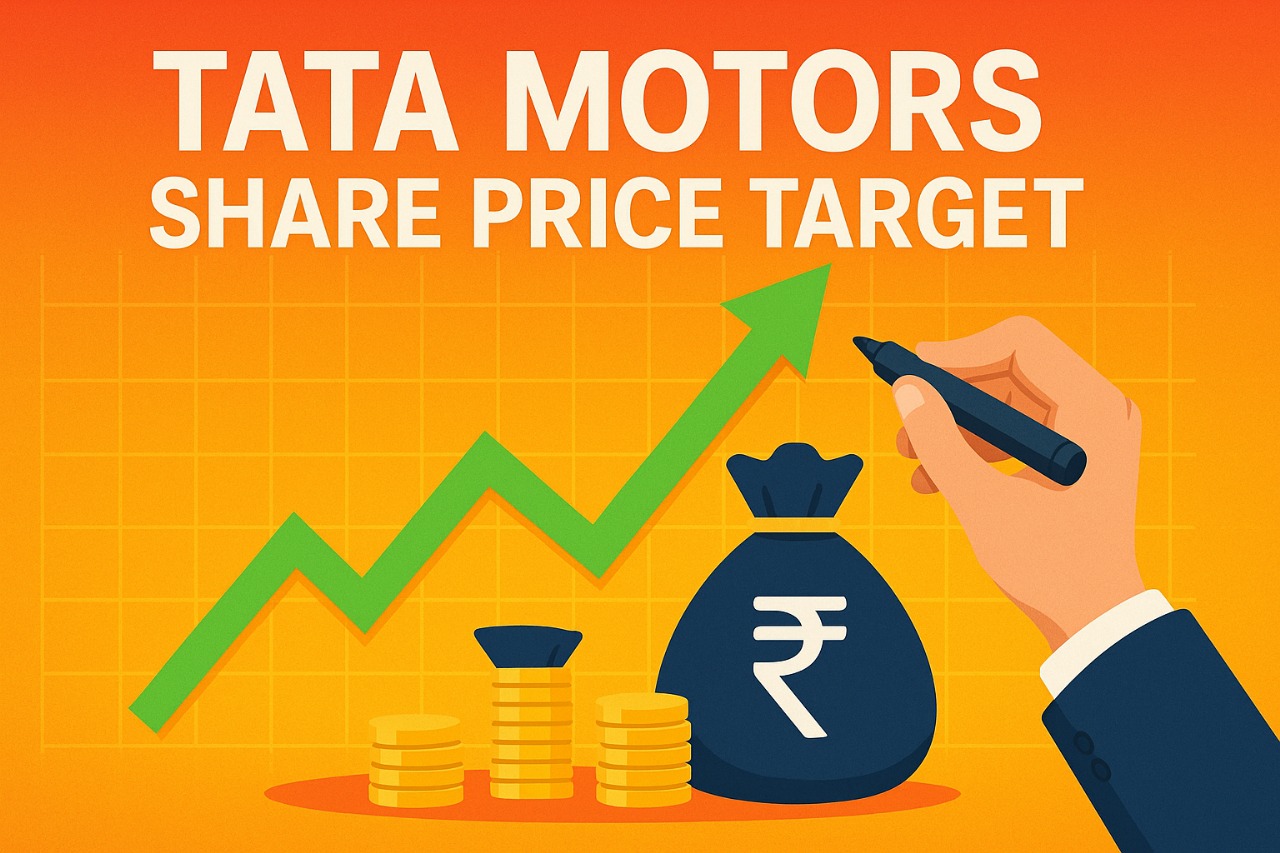In recent months, Tata Motors stock has been on the radar of almost every investor. With India’s EV revolution picking pace and Jaguar Land Rover showing recovery in global markets, Tata Motors has positioned itself as a potential multibagger for the long term. But the million-dollar question remains: Can Tata Motors really cross the ₹2,000 mark by 2030?
The company has delivered strong quarterly numbers, debt reduction measures, and expanding EV sales, which have boosted investor confidence. At the same time, risks such as raw material price hikes and rising competition in the EV space cannot be ignored.
In this article, we explore Tata Motors share price targets for 2025, 2026, and 2030, along with factors that could decide whether this stock continues its rally or faces challenges ahead.
Tata Motors Share Price Target Forecast
| Year | Minimum Target (₹) | Maximum Target (₹) |
|---|---|---|
| 2025 | 950 | 1,100 |
| 2026 | 1,200 | 1,350 |
| 2030 | 1,800 | 2,200 |
These estimates are based on the company’s EV leadership, JLR’s performance, domestic demand, and financial discipline.
Why Tata Motors Stock Is in Focus
-
EV Leadership in India – Tata Motors dominates the Indian EV market with over 70% share. Cars like Nexon EV and Tiago EV are driving record sales.
-
Jaguar Land Rover Growth – JLR sales are picking up in Europe and China, especially with demand for luxury SUVs and upcoming electric models.
-
Debt Reduction – Tata Motors has been cutting down automotive debt, which improves profitability and boosts investor confidence.
Tata Motors Share Price Target 2025
By 2025, Tata Motors is expected to gain from EV adoption and strong domestic passenger vehicle sales. Analysts project a target range of ₹950–₹1,100 if the momentum continues.
Tata Motors Share Price Target 2026
In 2026, with increased EV launches and export growth, Tata Motors could potentially reach ₹1,200–₹1,350. This will depend on JLR’s performance and global economic stability.
Tata Motors Share Price Target 2030
By 2030, Tata Motors aims to become a global EV powerhouse. If India’s EV penetration grows as expected and JLR transitions successfully into premium EVs, the stock could touch ₹1,800–₹2,200. Long-term investors could see multibagger returns if growth continues at this pace.
Risks to Keep in Mind
-
Intense Competition – Mahindra, Tesla, and other global EV players are challenging Tata’s dominance.
-
Global Slowdown – Weak demand in Europe or China may hurt JLR sales.
-
Rising Costs – Battery and raw material costs could pressure margins.
FAQs on Tata Motors Share Price Target
Q1. What is Tata Motors share price target for 2025?
The estimated target is ₹950–₹1,100, driven by EV growth and strong domestic demand.
Q2. Can Tata Motors stock reach ₹2,000 by 2030?
Yes, if EV adoption grows and JLR performs well, Tata Motors may cross ₹2,000 by 2030.
Q3. Is Tata Motors a good stock for long-term investment?
Tata Motors is considered strong for long-term investors due to EV leadership, JLR recovery, and improving financials.
Q4. What are the risks in Tata Motors stock?
Competition in EVs, raw material price hikes, and global slowdown risks.
Q5. What is Tata Motors share price target for 2026?
By 2026, Tata Motors could trade between ₹1,200–₹1,350 if current momentum continues.
Conclusion
Tata Motors is no longer just a traditional automaker—it’s a serious EV contender with global ambitions. The company’s focus on innovation, premium offerings through JLR, and debt reduction makes it an attractive long-term investment.
With share price targets of ₹950–₹1,100 in 2025, ₹1,200–₹1,350 in 2026, and ₹1,800–₹2,200 in 2030, Tata Motors could emerge as a multibagger stock. But like every investment, risks remain, and investors must track global and domestic market conditions closely.
Final Take: Do you think Tata Motors will maintain its EV dominance in India by 2030, or will international competitors steal the spotlight?
